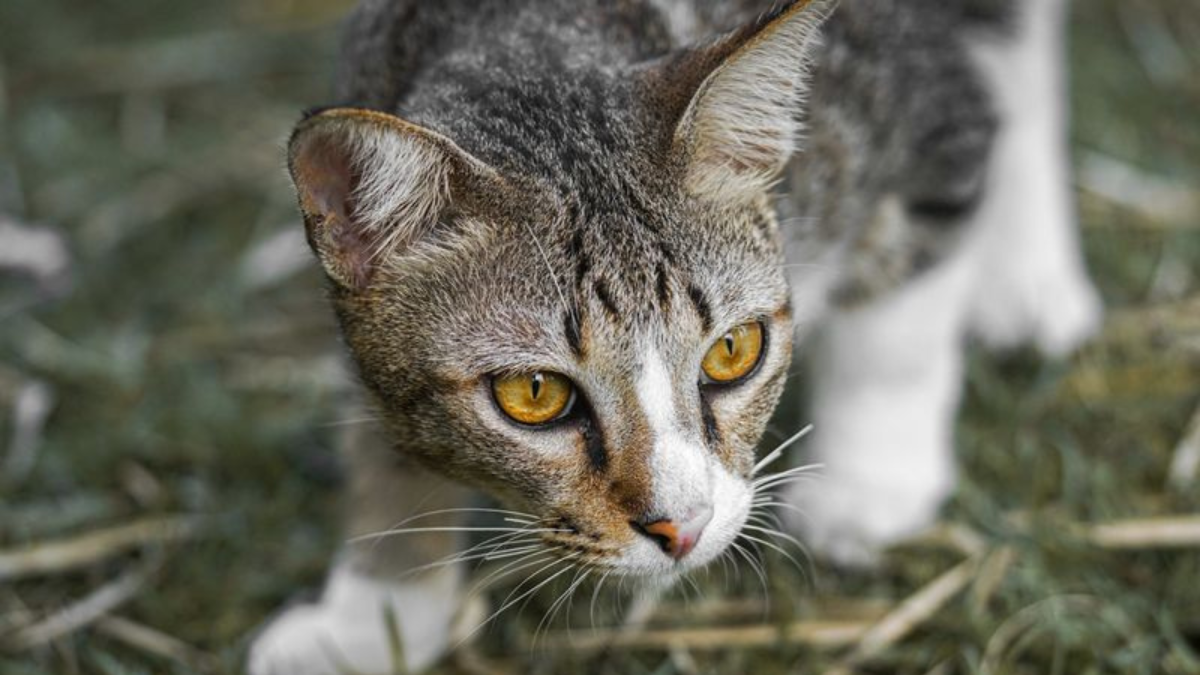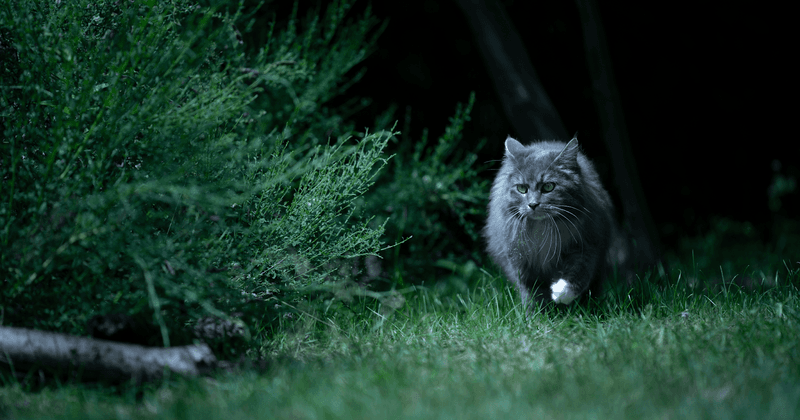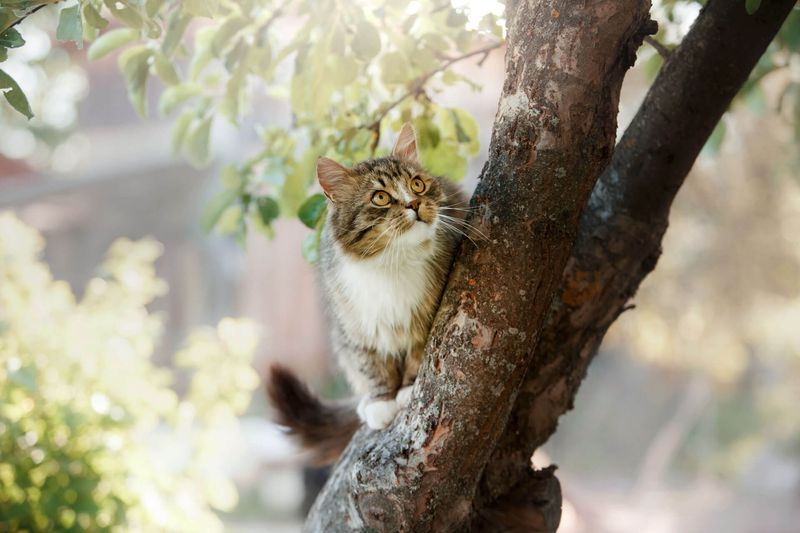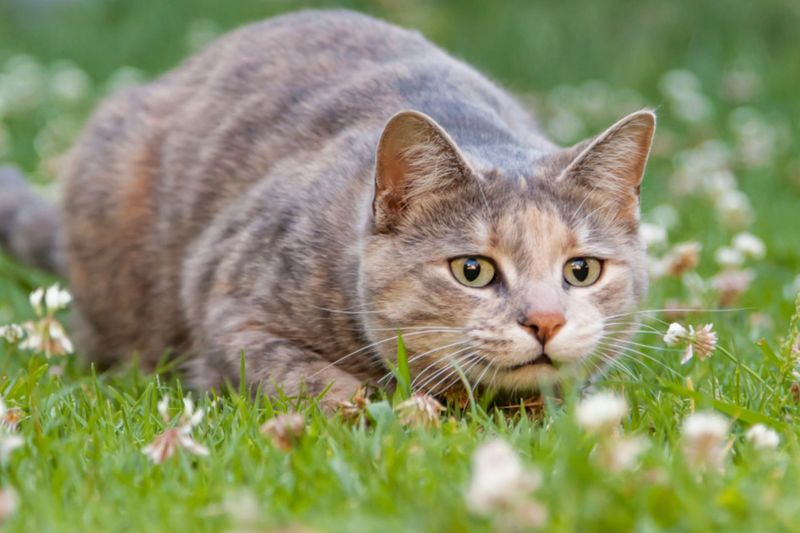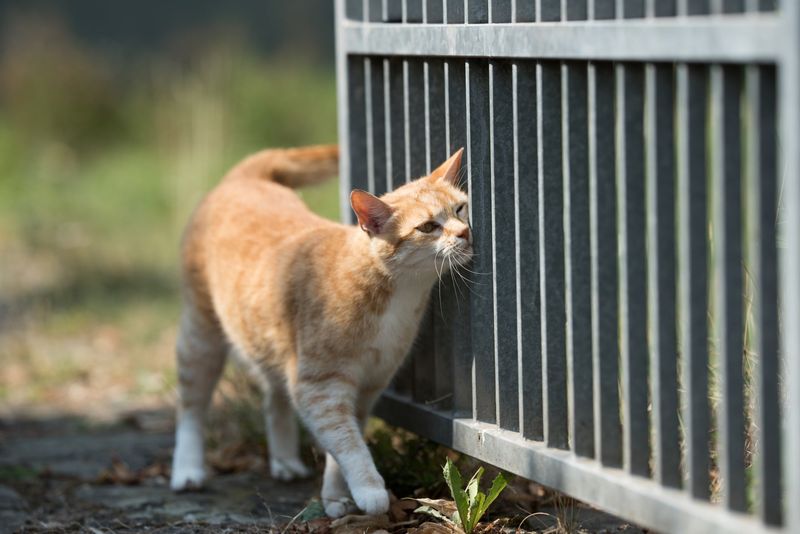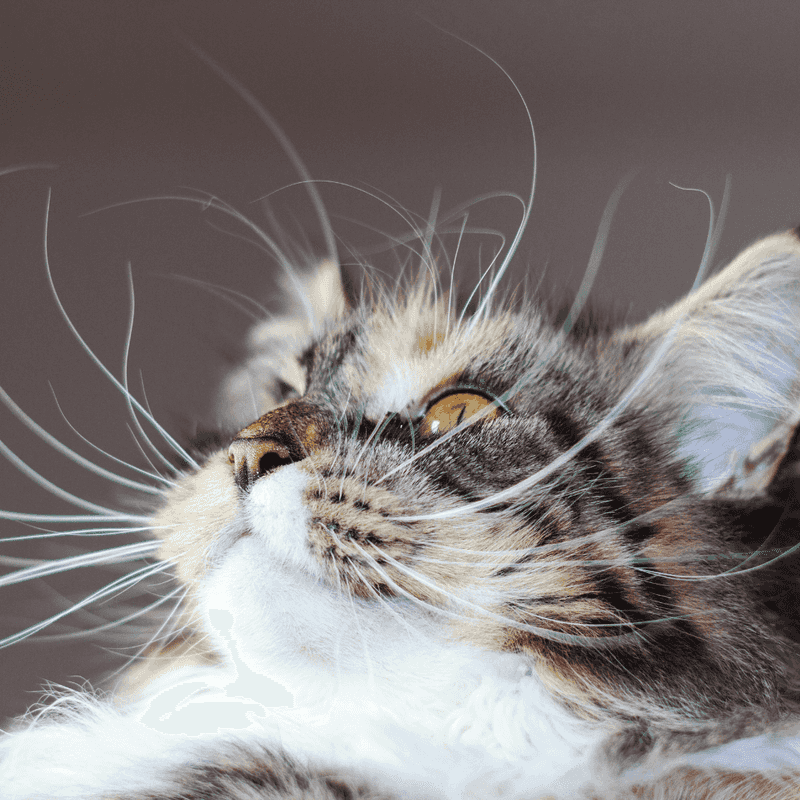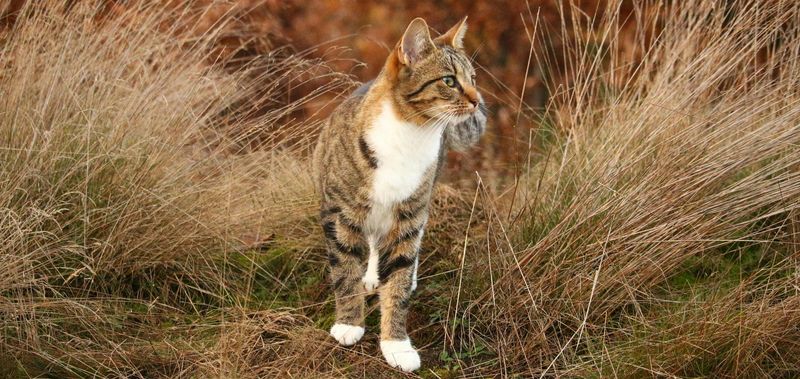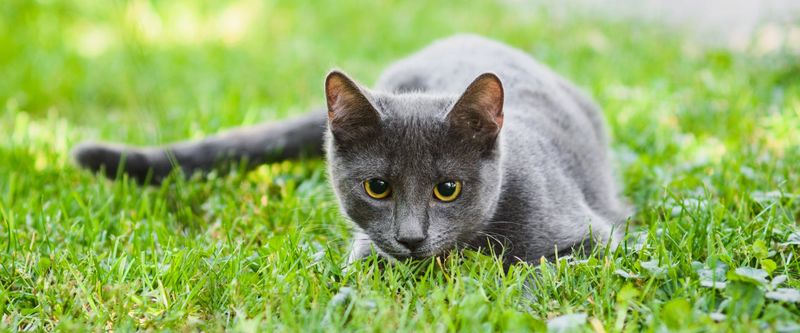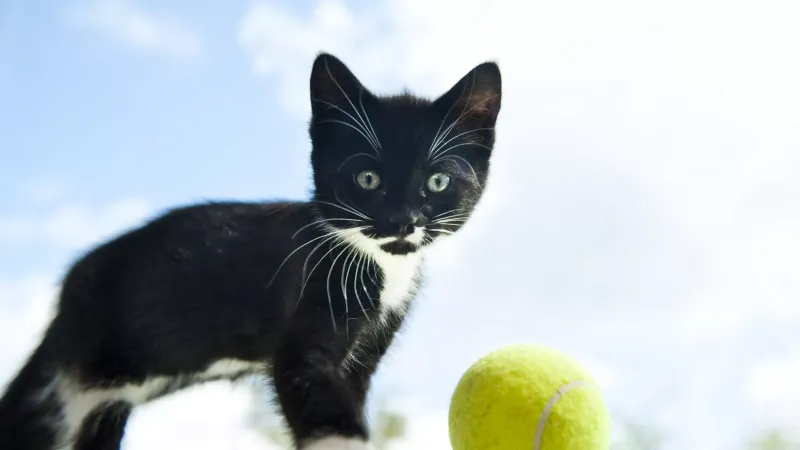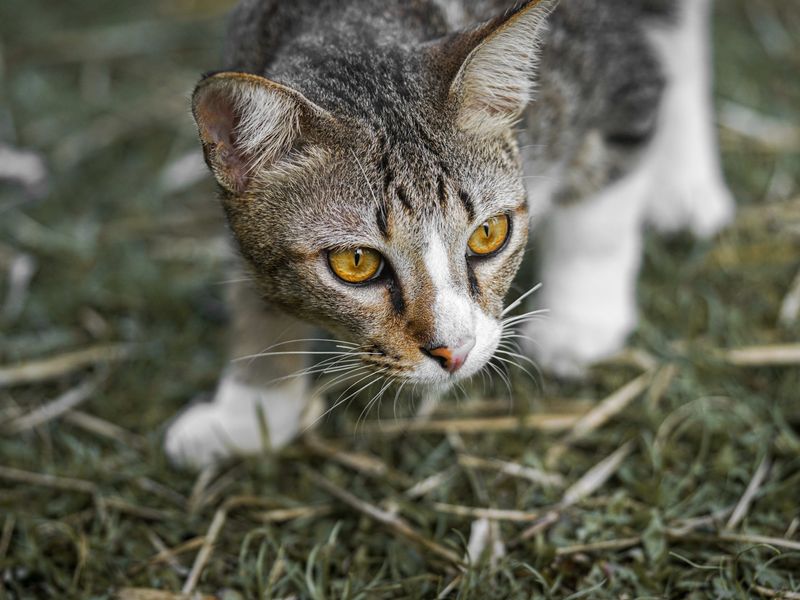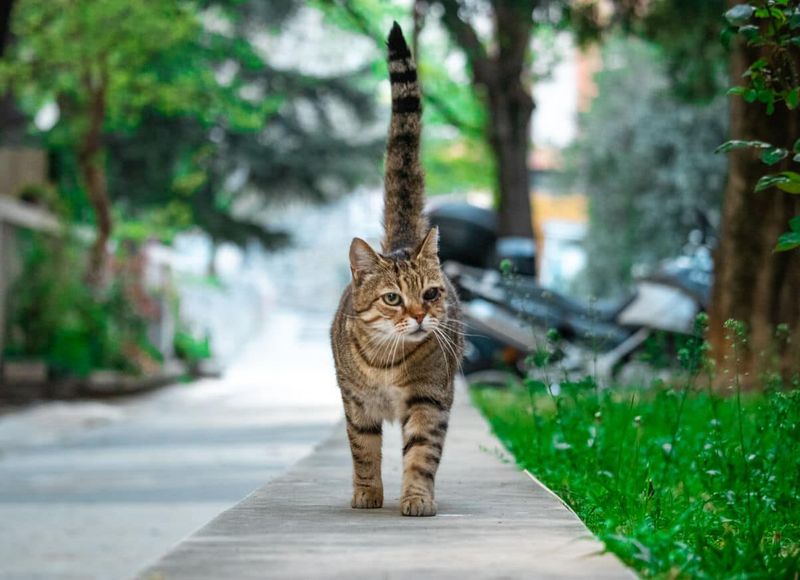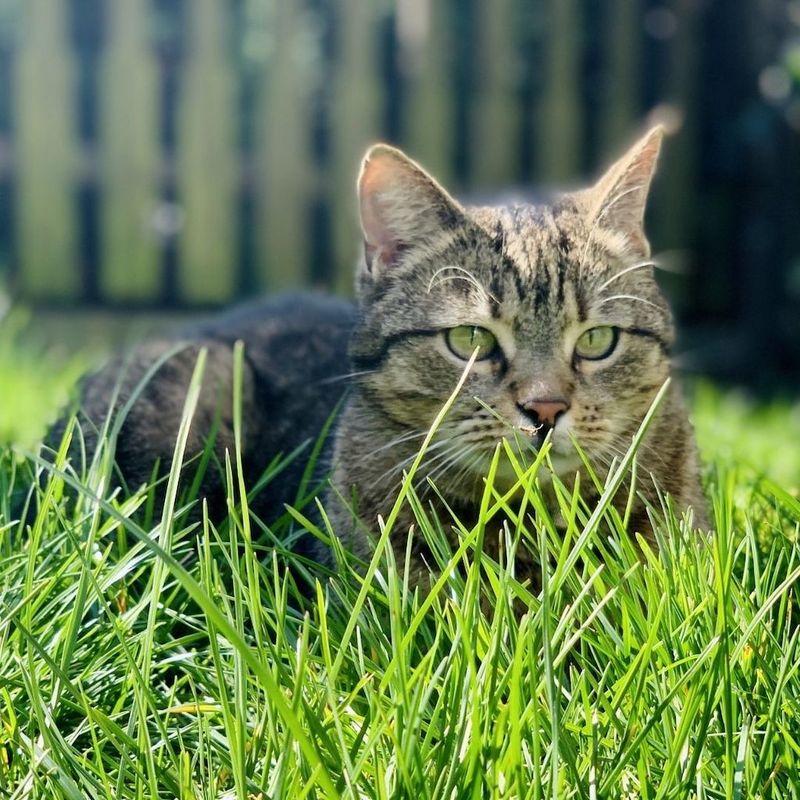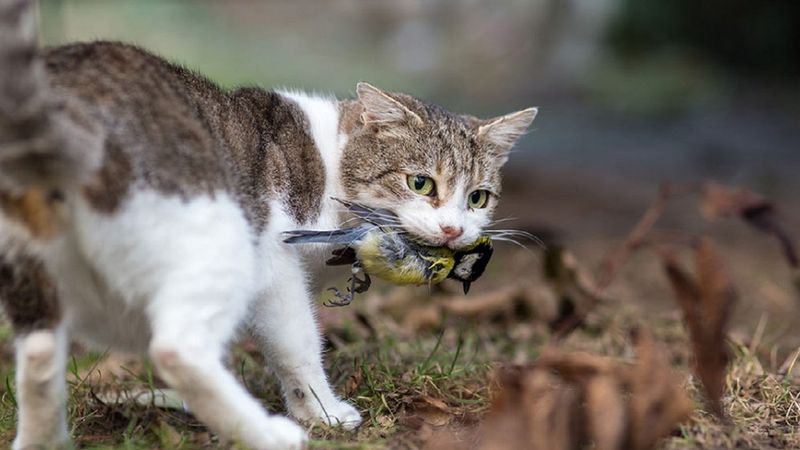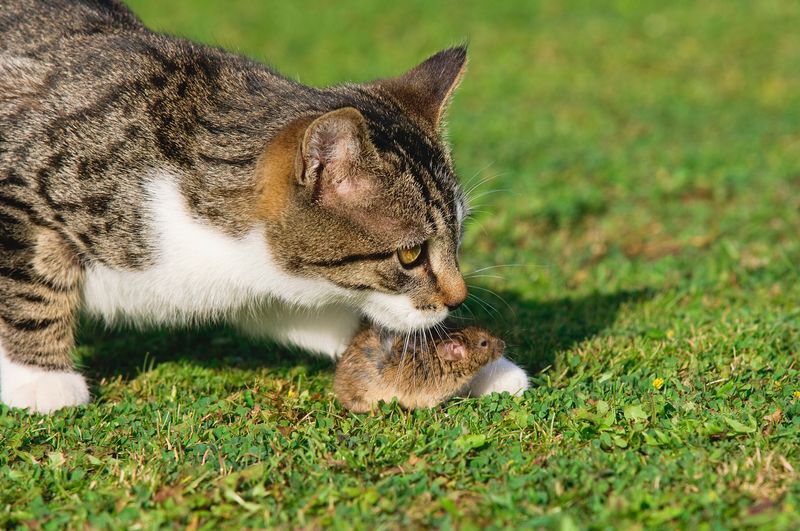📖 Table of Content:
- 1. Nocturnal Predators
- 2. Pouncing Techniques
- 3. Stalking Skills
- 4. Territorial Marking
- 5. Whisker Sensitivity
- 6. Silent Movement
- 7. Ambush Strategy
- 8. Play as Practice
- 9. Scent Tracking
- 10. Keen Hearing
- 11. Quick Reflexes
- 12. Climbing for Advantage
- 13. Solitary Hunters
- 14. Tail Communication
- 15. Concealment Skills
- 16. Environmental Adaptability
- 17. Hunting Playfulness
Cats are known for their mysterious and captivating nature, often leaving owners in awe of their predatory instincts. These natural behaviors, deeply ingrained in their biology, reveal much about their wild ancestry. By understanding these habits, it becomes easier to appreciate the complexity of their actions and the depth of their instincts.
Every cat, whether a pampered house pet or a wild hunter, exhibits certain hunting behaviors that are both fascinating and instinctual. From their sharp senses to their precise movements, these traits are finely tuned to help them survive in the wild. Exploring these hunting techniques provides a glimpse into the natural world that still influences domestic cats today.
By uncovering 17 surprising facts about cat hunting, one can begin to understand the primal instincts that drive these feline creatures. Each fact offers a deeper connection to the wild side of cats, revealing behaviors that go beyond what meets the eye. Through this exploration, the intriguing world of a cat’s hunting habits becomes even more fascinating and enriching.
1. Nocturnal Predators
Cats are naturally nocturnal predators, with heightened senses that allow them to hunt at night. Their eyes can detect even the slightest movement in low light, making them formidable hunters after dark.
During the nighttime, cats rely on their acute hearing to pinpoint the location of their prey. It’s fascinating to watch a cat transition into hunting mode, moving silently and waiting patiently for the perfect moment to pounce. For those with outdoor cats, understanding this nocturnal habit can help in keeping them safe while allowing them to indulge in their natural instincts.
2. Pouncing Techniques
The pouncing technique is a signature move in a cat’s hunting repertoire. By crouching low to the ground and wiggling their hindquarters, they prepare to launch themselves at unsuspecting prey. This motion is not merely preparation but part of an intricate strategy to catch their target off guard.
Cats practice this behavior even during play, honing their skills for actual hunting scenarios. It’s a blend of patience, precision, and agility, reflecting their wild ancestry. Cats’ pounce is a testament to their evolutionary prowess, making them efficient hunters in any environment.
3. Stalking Skills
Stealth is a cat’s secret weapon in the wild, and they bring this instinct to life even at home. With careful, deliberate steps, they can close in on their prey undetected. The soft padding of their paws ensures a silent approach, avoiding any surprises.
This behavior is deeply ingrained, often seen during playtime as they practice on toys or shadowy corners. The art of stalking showcases a cat’s instinctual connection to its wild ancestors, a dance of stealth and precision that remains captivating to observe.
4. Territorial Marking
As territorial creatures, cats use scent marking to define their hunting grounds. By rubbing their face or scratching surfaces, they leave behind traces of their presence. This behavior signals to other animals to respect their space, reducing the chance of confrontation.
Understanding this territorial nature can help cat owners create a space that satisfies their pet’s need for control. Providing scratching posts and territory within the home allows them to indulge this instinct safely. It’s a fascinating insight into their territorial and hunting instincts.
5. Whisker Sensitivity
Whiskers are not just ornamental; they are crucial sensory tools that enhance a cat’s hunting capabilities. These specialized hairs detect changes in the environment, helping cats gauge the size and shape of obstacles and prey. Whiskers are so sensitive that they can pick up even the slightest air currents.
This sensory feedback assists in navigation and hunting, guiding the cat through intricate maneuvers. Maintaining the integrity of a cat’s whiskers is essential for their hunting success. Trimming or damaging them can impair their ability to move and hunt efficiently.
6. Silent Movement
Moving without a sound is one of a cat’s greatest hunting strengths. Their padded paws ensure they can sneak up on prey, barely making a noise. The flexibility of their bodies further enhances this stealth, enabling them to move with grace and precision.
Observing a cat stalking through grass or across a room, one can appreciate the grace and precision of their steps. This talent is innate, refined through play and exploration. Encouraging your cat to engage in activities that mimic hunting can help strengthen this natural ability.
7. Ambush Strategy
For cats, ambushing is an efficient hunting technique that conserves energy while ensuring success. By waiting in silence for the right moment, they take advantage of their prey’s vulnerability. This strategy also appears in playful domestic cats, who hide and wait to pounce on unsuspecting toys or objects.
The ambush approach is a clever adaptation, reflecting their efficiency as hunters. For cat owners, understanding this behavior can enhance playtime interactions, providing toys or hiding spots that stimulate their cat’s natural hunting instincts.
8. Play as Practice
Play is more than mere entertainment for cats; it’s an essential practice for honing hunting skills. Through playful interactions, cats develop the techniques they need for successful hunting, such as pouncing, biting, and stalking. Even indoor cats exhibit these behaviors, using toys and games to simulate hunting scenarios.
Encouraging play is vital for mental and physical stimulation, allowing cats to indulge their instincts. Providing a variety of toys that mimic prey can help satisfy this need. Observing a cat at play offers insight into their wild nature and the importance of practice in honing their skills.
9. Scent Tracking
Cats possess an extraordinary sense of smell, which they use to track scents and locate prey. This ability to detect and follow scent trails is a critical aspect of their hunting behavior. Their olfactory senses are finely tuned, allowing them to distinguish between different smells and track them over long distances.
Scent tracking is not only used for hunting but also for finding their way back home or locating other cats. Providing environments enriched with scents can stimulate this natural behavior, offering cats an opportunity to explore and engage with their surroundings.
10. Keen Hearing
The sense of hearing is crucial for cats when hunting, giving them an edge in locating prey. Their ears can swivel and rotate, enabling them to detect the faintest of noises, like rustling leaves or tiny footsteps. This exceptional ability to hear allows them to hunt effectively, even in low-visibility conditions.
Cats’ hearing range extends to frequencies far beyond human capability, making them exceptional hunters. Providing a quiet environment where cats can listen and react to natural sounds can enhance this ability. It’s a reminder of their wild heritage and their finely tuned senses.
11. Quick Reflexes
Cats are renowned for their quick reflexes, a crucial aspect of their hunting prowess. These lightning-fast responses enable them to react to sudden movements, whether it’s a darting mouse or a dangling toy. The agility and speed with which cats can leap, twist, and pounce are awe-inspiring.
These reflexes are honed through play and practice, allowing cats to master the art of catching their prey efficiently. Encouraging interactive play can help maintain a cat’s reflexes, providing them with opportunities to practice their skills and stay sharp. It’s a testament to their evolutionary success.
12. Climbing for Advantage
Scaling heights is a game-changer for cats when it comes to hunting. By climbing trees or elevated surfaces, they can spot prey from a distance, giving them a distinct advantage. This elevated perch allows them to plan their next move with unmatched precision.
In domestic settings, offering climbing structures or cat trees can satisfy this instinctual behavior, allowing cats to explore vertical spaces. Watching a cat navigate heights reveals their incredible balance and agility, traits that have been honed over generations to enhance their hunting capabilities.
13. Solitary Hunters
Unlike pack animals, cats are solitary hunters, relying on their individual skills and instincts to catch prey. This independence is reflected in their behavior, as they prefer to hunt alone rather than in groups. Their solitary nature allows them to focus on their target without distraction, using their senses to guide them.
Even domesticated cats exhibit this trait, often preferring solitary play and exploration. Understanding this aspect of their personality can aid in creating environments that respect their need for independence. It’s a defining characteristic of cats that underscores their unique hunting approach.
14. Tail Communication
A cat’s tail is more than a balance aid; it’s a communication tool during hunting. Subtle movements convey intentions, such as a slow swish indicating focus or a flick signaling frustration. Understanding tail language can provide insights into a cat’s mood and behavior during hunting scenarios.
Observing their tail’s movement reveals the intricate dance of communication that takes place as they stalk, pounce, and capture. Recognizing these signals can enhance interactions with your cat, allowing for better communication and understanding. It’s a fascinating aspect of their behavior that enriches the bond between cat and owner.
15. Concealment Skills
With an uncanny ability to vanish into their surroundings, cats are concealment experts. Whether they’re tucked into a shadowy corner or hidden among tall grasses, they remain virtually invisible. This remarkable skill underscores their cleverness and mastery of their environment.
This behavior is often observed during play, where they use toys or furniture to practice their hiding techniques. Providing opportunities for your cat to engage in this behavior can enrich their environment and satisfy their instincts. It’s a captivating aspect of their hunting habits.
16. Environmental Adaptability
The ability to adjust to various environments makes cats exceptional hunters in diverse settings. Whether navigating the complexities of urban areas or the tranquility of rural landscapes, they always find a way to thrive. This remarkable adaptability is what has allowed cats to flourish across the globe.
By observing a cat’s ability to adjust to new surroundings, one can appreciate their resilience and resourcefulness. Creating diverse environments at home can stimulate this adaptability, offering challenges that engage their senses and instincts. It’s an inspiring trait that highlights their survival skills and intelligence.
17. Hunting Playfulness
Hunting isn’t solely about survival for cats; it’s also an opportunity for play and enjoyment. The playful aspect of hunting reflects their inquisitive nature and desire to interact with their environment. Even when not pursuing actual prey, cats engage in playful hunting behaviors that mimic the thrill of the chase.
Encouraging this playfulness with toys and interactive games can provide mental stimulation and satisfy their instincts. This joyful approach to hunting illustrates the balance cats maintain between their wild instincts and the enjoyment they derive from their environment. It’s a delightful aspect of their personality.
